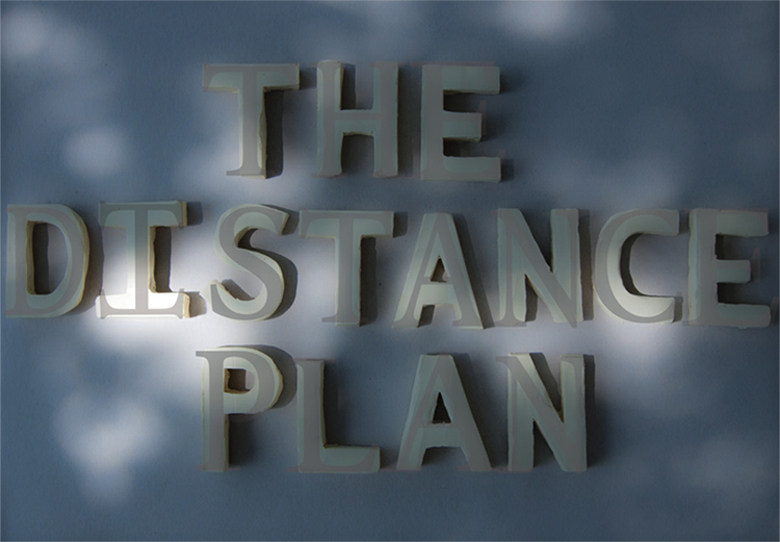

EXHIBITION. September 2012
In The Distance Plan, six artists respond to the conceptual challenge of thinking through the most pressing issue of our time, climate change. Though undoubtedly a moral and political issue, The Distance Plan concentrates on the philosophical complexities that climate change poses. How do we visualize a future so foreign that its contours are indescribable? How do we connect current actions and future outcomes across so many variable time frames? For The Distance Plan, each artist involved devises a new set of tools for illustrating the complexities of such a process.
Despite our role in helping create the problem, climate change, paradoxically, is an issue with consequences largely outside our present lifespans. In response to such a conundrum The Distance Plan includes works that adopt a range of strategies including signifying temporal remoteness with geographic remoteness.
In 'Africa is Real 1995/2010' Michala Paludan tranforms family photographs chronicling ethnographic field work undertaken by her mother in the Sudan in the mid 1990s. Rather than illustrating this experience Paludan implicates the viewer as the generator of the work, calling for images of distant experience to be imagined in the present.
Steven Kado presents a vinyl banner on which is printed an abstracted view of light hitting the wall of his toronto apartment. A postcard titled ‘Los Angles view for Auckland as seen in Toronto, for Los Angeles,’ shows a similar banner in which a snippet of place is transported and replaced. To be here thinking about there - the act of looking at Kado’s work is the act of thinking though vastness.
Bjarki Bragason’s work considers an archive of destruction. Constructed through correspondence with a botanist at the Bishop Museum in Honolulu, fragmented and broken specimens of rare, endangered and extinct species reflect the relationship between land development, history and ecology.
Amy Balkin’s project Public Smog proposes a redefining of the common-pool resource that is the atmosphere, and in so doing highlights the social barriers and bureaucratic challenges that block much needed environmental regulation.
Concerned with questions of the tangibility of local action, Joe Hoyt’s minutely rendered depictions of Los Angeles’ Exposition Line chronicles the existing urban infrastructure’s slow economic and political response to climate change.
Louise Menzies steps back to consider future forecasts through the lens of historiography. Her work touches on French historian Fernand Braudel’s system for presenting social change within a number of environmental cycles.
Together the intellectual and formal gestures presented in The Distance Plan highlight the need for an accelerated growth of social and political pressure regarding climate policy as well as the importance of not just modeling viable futures, but diagramming the causal links between current actions and what is forthcoming.
A a catalogue will accompany the exhibition with new writing from curator Abby Cunnane, poet Airini Beautrais and artist and urban planner Biddy Livesey.
Exhibition Images:
http://favoritegoodslosangeles.com/exhibitions/the-distance-plan/